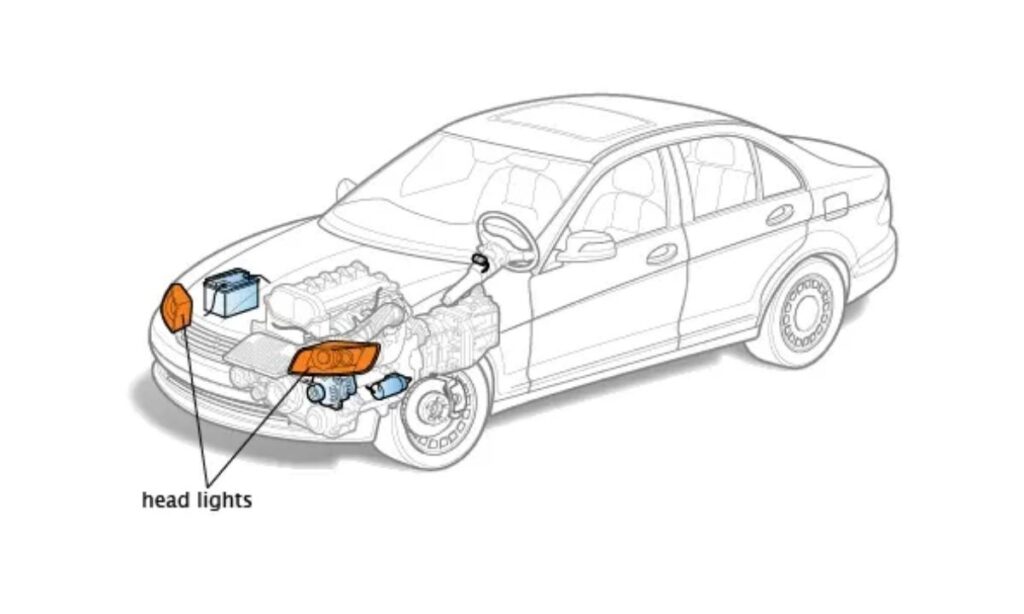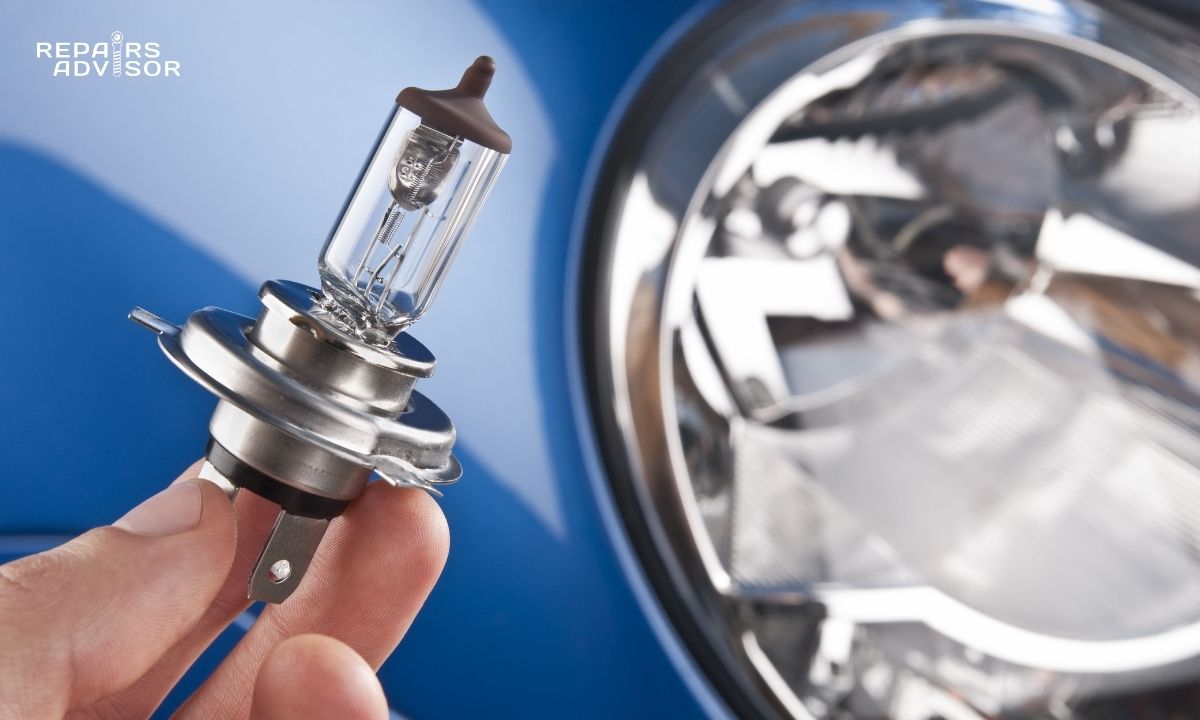The headlight bulb is the component directly responsible for generating the light that illuminates the road ahead. While older vehicles sometimes used a “sealed beam” design where the bulb and housing were one unit, most modern cars feature easily replaceable headlight bulbs. These bulbs can be filled with gases like halogen, or use advanced technologies like High-Intensity Discharge (HID/Xenon) or LEDs to provide superior illumination compared to older, standard incandescent bulbs.
When a headlight bulb fails, it immediately impacts your ability to see and be seen, compromising safety on the road.

Signs of a Bad or Failing Headlight Bulb
Identifying a failing headlight bulb is usually quite straightforward, but it’s important to recognize the subtle cues as well:
- One or More Headlights Will Not Operate:
- This is the most direct and common symptom. You turn on your headlights, and one or both simply don’t light up at all. This indicates that the filament (in halogen bulbs) has burned out, or the internal components of an HID or LED bulb have failed.
- If only one headlight is out, it’s highly likely to be a bulb issue. If both are out, it’s still possible it’s both bulbs, but it also raises the possibility of a common electrical problem like a fuse, relay, or the headlight switch itself.
- Dim or Flickering Headlights:
- Instead of a steady, bright beam, you might notice your headlights appearing noticeably dimmer than usual, especially at idle. They might also flicker or pulsate intermittently.
- For halogen bulbs, this can indicate a weakened filament nearing the end of its life. For HID bulbs, flickering can signal a failing bulb or a faulty ballast/igniter system that powers it. This issue reduces your visibility and can be a distraction to other drivers.
- Changes in Light Color (for HID/Xenon Bulbs):
- If your vehicle has HID (Xenon) headlights, a common sign of a failing bulb is a change in the color of the light it emits. Instead of a bright white or slightly blue-white, a failing HID bulb might turn noticeably pink, purple, or even orange before eventually burning out completely. This is due to the gases inside the bulb deteriorating.
- Visible Blackening or Damage on Halogen Bulbs:
- If you can physically see the halogen bulb (after carefully accessing it), you might notice a dark, sooty discoloration or blackening inside the glass bulb. This indicates the filament has burned out and deposited material on the inside of the glass.
- Discoloration of the Headlight Lens (Secondary Symptom):
- While not a direct sign of a bulb failure, hazy, yellowed, or clouded headlight lenses (the clear plastic cover) significantly reduce the light output, making even a perfectly good bulb seem dim. This is usually caused by UV exposure and should be addressed separately by cleaning or restoration.
Important Advice for Headlight Bulb-Related Repairs
Replacing headlight bulbs is a common automotive task, but it comes with several important considerations:
- The Most Common Failure:
- By far, the most frequent reason a headlight stops working is simply a burned-out bulb. They are consumables with a finite lifespan, similar to household light bulbs.
- Access Can Be Difficult: Don’t assume a bulb replacement will be easy. On many modern vehicles, engineers have packed engines tightly, making access to headlight bulbs incredibly challenging. You might need to remove air boxes, battery trays, fender liners, or even partially unbolt the bumper or the entire headlight assembly just to reach the bulb. Always consult your vehicle’s owner’s manual or a repair guide.
- Consider Replacing Both Bulbs Simultaneously:
- When one headlight bulb burns out, its counterpart on the other side of the vehicle often isn’t far behind. They typically have similar lifespans. Many repair shops will recommend replacing both bulbs at the same time. This ensures consistent light output and color (especially important for HID bulbs), and saves you a trip back to the shop when the other side inevitably fails soon after.
- Understand Your Bulb Type:
- Single vs. Dual Filament: Some vehicles (often older ones or those with simpler designs) use a single bulb that contains both the high beam and low beam filaments within one glass housing (e.g., an H4 bulb). Other vehicles use two separate bulbs – one for the low beam and one for the high beam. Make sure you know which type your car uses.
- High-Intensity Discharge (HID/Xenon): If your car has HID headlights, these bulbs contain noble gases and require a separate component called a ballast or igniter to operate. HID bulbs are significantly more expensive to replace than standard halogen bulbs. Always handle them with care and avoid touching the glass, as oils from your skin can create hot spots and shorten their life.
- LED Headlights: Many newer vehicles use LED (Light Emitting Diode) technology for headlights. In most cases, the LEDs are integrated directly into the headlight assembly and are not user-replaceable as individual bulbs. If the LEDs fail, the entire headlight assembly usually needs to be replaced, which can be very costly.
- Headlight Aiming is Crucial:
- After replacing a headlight bulb (especially if the entire headlight assembly was moved or removed for access), it’s critical to ensure the headlight is aimed correctly. Improperly aimed headlights are a safety hazard:
- Too Low: You won’t have sufficient visibility down the road.
- Too High: You will blind oncoming drivers, creating a dangerous situation.
- While some aiming adjustments can be done manually, many modern headlights (especially those with automatic leveling or adaptive features) require specialized tools or even computer calibration to ensure proper aiming.
- After replacing a headlight bulb (especially if the entire headlight assembly was moved or removed for access), it’s critical to ensure the headlight is aimed correctly. Improperly aimed headlights are a safety hazard:
- Look Beyond the Bulb if Problem Persists:
- If replacing the bulb doesn’t solve the problem, or if both headlights are out, the issue is likely elsewhere in the electrical system:
- Blown Fuse: Check your vehicle’s fuse box for a blown headlight fuse.
- Faulty Relay: A bad headlight relay can interrupt power to the bulbs.
- Headlight Switch or High Beam Switch Failure: The switches themselves can wear out, preventing power from reaching the headlights.
- Wiring Issues: Damaged, corroded, or loose wiring in the headlight circuit can prevent the bulbs from receiving power.
- If replacing the bulb doesn’t solve the problem, or if both headlights are out, the issue is likely elsewhere in the electrical system:
Conclusion
Your headlight bulbs are fundamental to your safety and visibility on the road. A non-functioning or dim headlight is more than just a minor inconvenience – it’s a hazard that needs immediate attention. While a simple bulb swap is often the solution, the complexity of modern vehicles, various bulb types, and the absolute necessity of correct aiming mean that this job isn’t always as straightforward as it seems.
Don’t compromise your safety or that of others on the road by driving with faulty headlights. A quick fix might seem appealing, but an incorrect installation or a misdiagnosed issue can lead to bigger problems down the line.
For a reliable and safe repair, consult a qualified automotive technician. They can accurately diagnose whether the issue is a simple bulb, a more complex electrical fault, or a necessary aiming adjustment, ensuring your headlights are bright, correctly aligned, and ready to light your way safely. Drive confidently knowing your path is well-illuminated – schedule a headlight inspection with an expert today!
